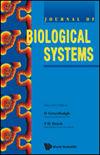在昆虫种群存在的情况下,模拟杀虫剂对作物生产的影响
IF 1.5
4区 数学
Q3 BIOLOGY
引用次数: 1
摘要
在这项研究工作中,提出并分析了一个非线性数学模型,通过使用杀虫剂控制昆虫种群来研究昆虫对农业生产力的不利影响。在模型公式中,假设农业作物以逻辑方式生长,昆虫的生长速度完全取决于具有Holling II型功能反应的农业作物。进一步假设昆虫吸收杀虫剂;因此,杀虫剂的用量与杀虫剂的用量和昆虫种群密度成正比,昆虫种群的增长率也成正比。讨论了所有非负平衡的可行性及其稳定性。稳定性分析表明,农作物消费率破坏了系统的稳定;然而,杀虫剂的喷洒速率使系统稳定。导出了pitchfork和Hopf分支存在的条件。考虑到杀虫剂的喷洒速度与时间有关,我们还讨论了最小化昆虫密度和相关成本的最佳控制策略。数值模拟验证了分析结果。本文章由计算机程序翻译,如有差异,请以英文原文为准。
MODELING THE EFFECTS OF INSECTICIDES ON CROP PRODUCTION IN THE PRESENCE OF INSECT POPULATION
In this research work, a nonlinear mathematical model is proposed and analyzed to study the adverse effects of insects on agricultural productivity by controlling the insect population using insecticides. In the model formulation, it is assumed that agricultural crops grow logistically and the growth rate of insects wholly depends on agricultural crops with Holling type-II functional response. It is further assumed that insects uptake insecticides; thus, the amount of insecticides decreases at a rate proportional to its amount and the density of insect population, and the growth rate of insect population decrease in the same proportion. The feasibility of all non-negative equilibria and their stability properties are discussed. Stability analysis specifies that agricultural crop consumption rate destabilizes the system; however, the spraying rate of insecticides stabilizes the system. The conditions for the existence of pitchfork and Hopf-bifurcation are derived. Considering the spraying rate of insecticides as time-dependent, we have also discussed the optimal control strategy to minimize both insect density and the associated cost. The numerical simulation validates the analytical findings.
求助全文
通过发布文献求助,成功后即可免费获取论文全文。
去求助
来源期刊
CiteScore
2.80
自引率
12.50%
发文量
31
审稿时长
1 months
期刊介绍:
The Journal of Biological Systems is published quarterly. The goal of the Journal is to promote interdisciplinary approaches in Biology and in Medicine, and the study of biological situations with a variety of tools, including mathematical and general systems methods. The Journal solicits original research papers and survey articles in areas that include (but are not limited to):
Complex systems studies; isomorphies; nonlinear dynamics; entropy; mathematical tools and systems theories with applications in Biology and Medicine.
Interdisciplinary approaches in Biology and Medicine; transfer of methods from one discipline to another; integration of biological levels, from atomic to molecular, macromolecular, cellular, and organic levels; animal biology; plant biology.
Environmental studies; relationships between individuals, populations, communities and ecosystems; bioeconomics, management of renewable resources; hierarchy theory; integration of spatial and time scales.
Evolutionary biology; co-evolutions; genetics and evolution; branching processes and phyllotaxis.
Medical systems; physiology; cardiac modeling; computer models in Medicine; cancer research; epidemiology.
Numerical simulations and computations; numerical study and analysis of biological data.
Epistemology; history of science.
The journal will also publish book reviews.

 求助内容:
求助内容: 应助结果提醒方式:
应助结果提醒方式:


